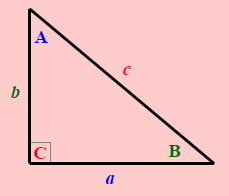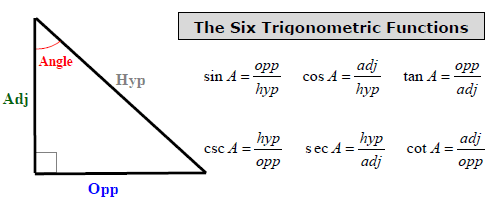
 |
|
|
|
Trigonometry: Triangle & MeasureThe word trigonometry comes from the Greek words that translate to "triangle" and "measure." Although it sounds simple, trig can be rather complex
Law of Sines: Find missing sides and angles of AAS, ASA, and SSA triangles. Law of Cosines: Find missing sides and angles of SSS and SAS triangles. The Unit Circle: Used to quickly evaluate common angles of trig functions. Trigonometric Identities: Used to simplify equations involving trig functions. Trigonometric Table: A complete list evaluating angles from 1 to 360 degrees. Free Online Trig Calculator: Quickly evaluate trig functions with one click! Tangent: Learn a basic definition of the tangent line.
The triangle's sides are given three special names according to their relation to the given angle.
Understanding these names is critical to understanding the trig functions. The figure below shows the naming, as well as the definition of the six trig functions. Notice that the bottom row is the recpriocal of the top row.
|
| . | ||
| Home │ Site Search │ Math Help Blog │ Help Keep GradeA Free | |
Written by Team GradeAmathhelp.com, all rights reserved. | ||

